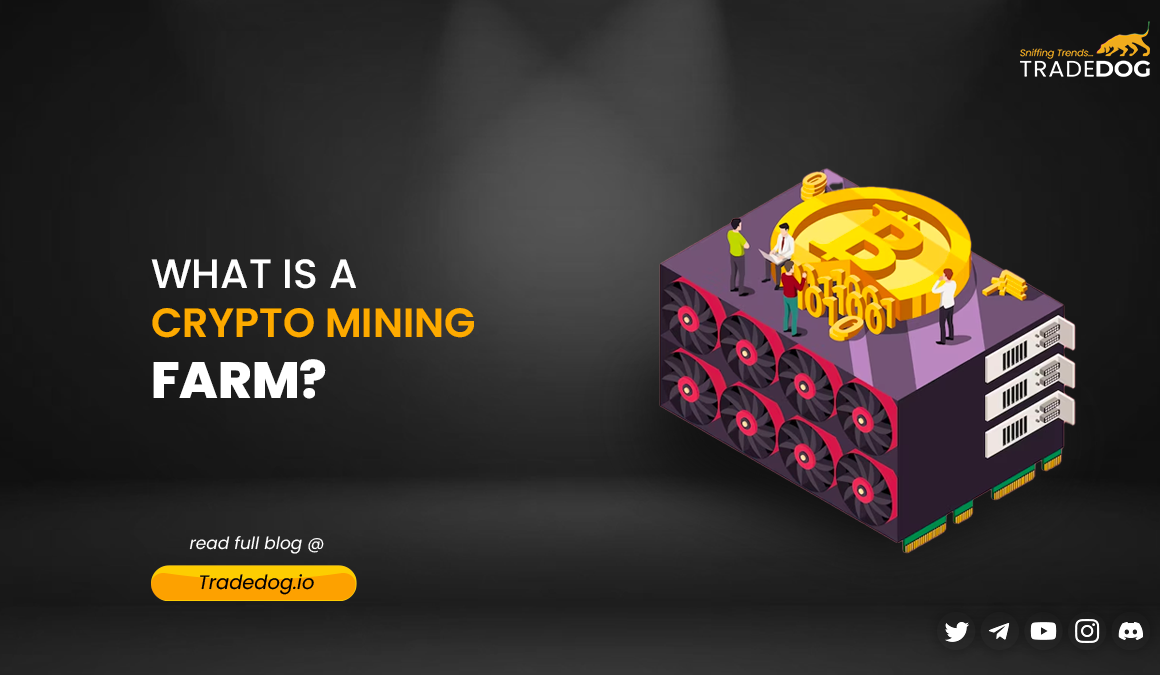Quick Links
Cryptocurrency has become a buzzword, not just among investors but also in the tech community. At the heart of this digital currency revolution are mining farms, which play a crucial role in maintaining and securing blockchain networks. Let’s dive into what mining farms are and how they work.
A mining farm in the context of cryptocurrency is a large-scale operation dedicated to the process of mining, which is the act of participating in a blockchain network to confirm transactions and contribute to the network’s security. These farms play a crucial role in the cryptocurrency ecosystem, especially for Proof-of-Work (PoW) based cryptocurrencies like Bitcoin.
Historical Overview
Historically, China dominated the world of cryptocurrency mining, attributed to its affordable electricity, readily available hardware, and extensive mining operations. This dominance shifted significantly following the imposition of stringent regulations and outright bans on crypto-mining activities within the country. As of now, China’s hash power stands at 106.2 EH/s, representing 21.11% of the world’s total mining farms.
In the wake of China’s regulatory crackdown, the United States has risen to prominence in the crypto mining sector. Particularly, states like Texas, where energy costs are lower, have become major hubs for mining activities. The current hash power in the United States is measured at 190.32 EH/s, accounting for 37.8% of global mining activities. Notably, 50% of the total global hash rate is now concentrated in three countries: the USA, China, and Kazakhstan. Next in line comes Canada & Russia commuting to a total of 7% of the total hash rate contributing to a total of 35.2 EH/s.
Here is a brief explanation of the workings of a mining farm:
How Bitcoin Mining Works
A Bitcoin mining farm is essentially a large-scale operation where numerous computers i.e., mining rigs, work together to mine cryptocurrencies like Bitcoin. This involves verifying transactions and adding them to the blockchain, which is a public ledger. This process also releases new Bitcoins into circulation.
Miners use their computing power to solve complex cryptographic puzzles. The first to solve a puzzle gets to add a new block of transactions to the blockchain and is rewarded with Bitcoins. 6.25 Bitcoins are released every time miners complete a block size of transactions. One block of transactions is the equivalent of 1MB and an average of 1400 transactions.
Functioning of a Mining Farm
- Mining Process: The main task of a mining farm is to process transactions on a blockchain network. This involves validating new transactions and recording them on the blockchain, a process that requires solving complex cryptographic puzzles.
- Blockchain Network Contribution: By solving these puzzles, mining farms contribute to the maintenance and security of the blockchain network. In Proof-of-Work (PoW) systems, like Bitcoin, this process involves a lot of computational power and energy.
- Mining Rewards: In return for their contribution to the network, mining farms receive rewards in the form of new cryptocurrency tokens. This process also introduces new coins into circulation, an essential aspect of digital currency ecosystems.
Here are some notable PoW protocols and their general reward structures:
| Cryptocurrency | Proof of Work Reward Rate |
| Bitcoin (BTC) | Halving process approximately every four years; reward was 6.25 BTC per block as of April 2023, subject to future halvings. |
| Ethereum (ETH) | Used to be PoW with rewards varying over time, around 2 ETH per block before transitioning to Proof of Stake (PoS). |
| Litecoin (LTC) | Undergoes halving events; reward was 12.5 LTC per block as of the last update, halved approximately every four years. |
| Bitcoin Cash (BCH) | Halves its block reward approximately every four years; reward was 6.25 BCH per block following its latest halving. |
Characteristics of a Mining Farm
- Large-Scale Operations: Mining farms are usually expensive setups that can occupy large spaces like warehouses. They consist of numerous mining rigs, which are specialized computers designed for mining activities.
- Location and Energy Requirements: These farms are strategically located to optimize operational costs, especially electricity, as mining consumes significant energy. Regions with cheaper electricity rates or access to renewable energy sources are preferred. Cooler climates are also advantageous, reducing the need for extensive cooling systems.
- Cooling Systems: Due to the heat generated by the continuous operation of mining rigs, effective cooling systems are crucial. These can range from traditional air cooling to more advanced methods like liquid or immersion cooling, where hardware is immersed in a non-conductive liquid.
- Use of Specialized Hardware: Mining farms often use ASIC (Application-Specific Integrated Circuit) miners, which are highly efficient at mining specific cryptocurrencies. ASICs are designed to perform the necessary computational work for mining more effectively than general-purpose hardware.
Pros and cons of Mining Farm
The large-scale operations dedicated to cryptocurrency mining, present a mix of advantages and disadvantages. On the plus side, they benefit from economies of scale, leading to more efficient operations and potentially lower costs per unit of cryptocurrency mined. They also boast increased hash power, access to advanced mining equipment, professional management, and in some cases, the use of renewable energy sources.
However, these advantages are counterbalanced by several drawbacks. High initial and operational costs are significant barriers, as mining farms require substantial investment in equipment, infrastructure, and energy. The profitability of these farms is closely tied to the volatile cryptocurrency market, meaning that fluctuations in crypto prices can greatly impact their financial viability. Regulatory risks also loom large, as the legal landscape surrounding cryptocurrencies can change rapidly and vary between regions. Environmental concerns, particularly for farms not utilizing renewable energy, are another critical issue, given the high energy consumption and carbon footprint associated with mining.
Additionally, the rapid pace of technological advancement in mining hardware means that equipment can quickly become obsolete, necessitating further investment. Finally, the centralization of mining power in large farms can conflict with the decentralized nature of many cryptocurrencies, and the technical and maintenance challenges of running such an operation require specialized knowledge and constant oversight.
Conclusion
Mining farms are more than just a collection of computers – they are the powerhouse of the cryptocurrency world, ensuring the smooth functioning and security of blockchain networks. While they offer significant benefits, they also come with challenges, particularly in terms of their environmental impact and the capital required to set them up.
For a young enthusiast keen on exploring the world of cryptocurrency, understanding mining farms is an exciting start. Remember, this field is ever-evolving, and staying updated with the latest trends and technologies is key to staying ahead.









